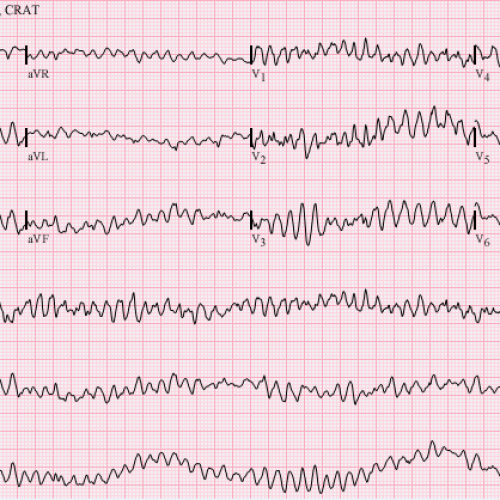DATASETS
Arrhythmia
This database contains 279 attributes, 206 of which are linear valued and the rest are nominal.
Concerning the study of H. Altay Guvenir: “The aim is to distinguish between the presence and absence of cardiac arrhythmia and to classify it in one of the 16 groups. Class 01 refers to ‘normal’ ECG classes 02 to 15 refers to different classes of arrhythmia and class 16 refers to the rest of unclassified ones. For the time being, there exists a computer program that makes such a classification. However there are differences between the cardiolog’s and the programs classification. Taking the cardiolog’s as a gold standard we aim to minimise this difference by means of machine learning tools.”
The names and id numbers of the patients were recently removed from the database.
Abstract: Distinguish between the presence and absence of cardiac arrhythmia and classify it in one of the 16 groups.
|
Data Set Characteristics: |
Multivariate |
Number of Instances: |
452 |
Area: |
Life |
|
Attribute Characteristics: |
Categorical, Integer, Real |
Number of Attributes: |
279 |
Date Donated |
1998-01-01 |
|
Associated Tasks: |
Classification |
Missing Values? |
Yes |
Number of Web Hits: |
363167 |
Source:
Original Owners of Database:
1. H. Altay Guvenir, PhD.,
Bilkent University,
Department of Computer Engineering and Information Science,
06533 Ankara, Turkey
Phone: +90 (312) 266 4133
Email: guvenir ‘@’ cs.bilkent.edu.tr
2. Burak Acar, M.S.,
Bilkent University,
EE Eng. Dept.
06533 Ankara, Turkey
Email: buraka ‘@’ ee.bilkent.edu.tr
3. Haldun Muderrisoglu, M.D., Ph.D.,
Baskent University,
School of Medicine
Ankara, Turkey
Donor:
H. Altay Guvenir
Bilkent University,
Department of Computer Engineering and Information Science,
06533 Ankara, Turkey
Phone: +90 (312) 266 4133
Email: guvenir ‘@’ cs.bilkent.edu.tr
Attribute Information:
— Complete attribute documentation:
1 Age: Age in years , linear
2 Sex: Sex (0 = male; 1 = female) , nominal
3 Height: Height in centimeters , linear
4 Weight: Weight in kilograms , linear
5 QRS duration: Average of QRS duration in msec., linear
6 P-R interval: Average duration between onset of P and Q waves in msec., linear
7 Q-T interval: Average duration between onset of Q and offset of T waves in msec., linear
8 T interval: Average duration of T wave in msec., linear
9 P interval: Average duration of P wave in msec., linear
Vector angles in degrees on front plane of:, linear
10 QRS
11 T
12 P
13 QRST
14 J
15 Heart rate: Number of heart beats per minute ,linear
Of channel DI:
Average width, in msec., of: linear
16 Q wave
17 R wave
18 S wave
19 R’ wave, small peak just after R
20 S’ wave
21 Number of intrinsic deflections, linear
22 Existence of ragged R wave, nominal
23 Existence of diphasic derivation of R wave, nominal
24 Existence of ragged P wave, nominal
25 Existence of diphasic derivation of P wave, nominal
26 Existence of ragged T wave, nominal
27 Existence of diphasic derivation of T wave, nominal
Of channel DII:
28 .. 39 (similar to 16 .. 27 of channel DI)
Of channels DIII:
40 .. 51
Of channel AVR:
52 .. 63
Of channel AVL:
64 .. 75
Of channel AVF:
76 .. 87
Of channel V1:
88 .. 99
Of channel V2:
100 .. 111
Of channel V3:
112 .. 123
Of channel V4:
124 .. 135
Of channel V5:
136 .. 147
Of channel V6:
148 .. 159
Of channel DI:
Amplitude , * 0.1 milivolt, of
160 JJ wave, linear
161 Q wave, linear
162 R wave, linear
163 S wave, linear
164 R’ wave, linear
165 S’ wave, linear
166 P wave, linear
167 T wave, linear
168 QRSA , Sum of areas of all segments divided by 10, ( Area= width * height / 2 ), linear
169 QRSTA = QRSA + 0.5 * width of T wave * 0.1 * height of T wave. (If T is diphasic then the bigger segment is considered), linear
Of channel DII:
170 .. 179
Of channel DIII:
180 .. 189
Of channel AVR:
190 .. 199
Of channel AVL:
200 .. 209
Of channel AVF:
210 .. 219
Of channel V1:
220 .. 229
Of channel V2:
230 .. 239
Of channel V3:
240 .. 249
Of channel V4:
250 .. 259
Of channel V5:
260 .. 269
Of channel V6:
270 .. 279
Relevant Papers:
H. Altay Guvenir, Burak Acar, Gulsen Demiroz, Ayhan Cekin “A Supervised Machine Learning Algorithm for Arrhythmia Analysis.” Proceedings of the Computers in Cardiology Conference, Lund, Sweden, 1997.
[Web Link]
- Provided by: Bilkent University
- guvenir@cs.bilkent.edu.tr
- https://w3.cs.bilkent.edu.tr/en/

